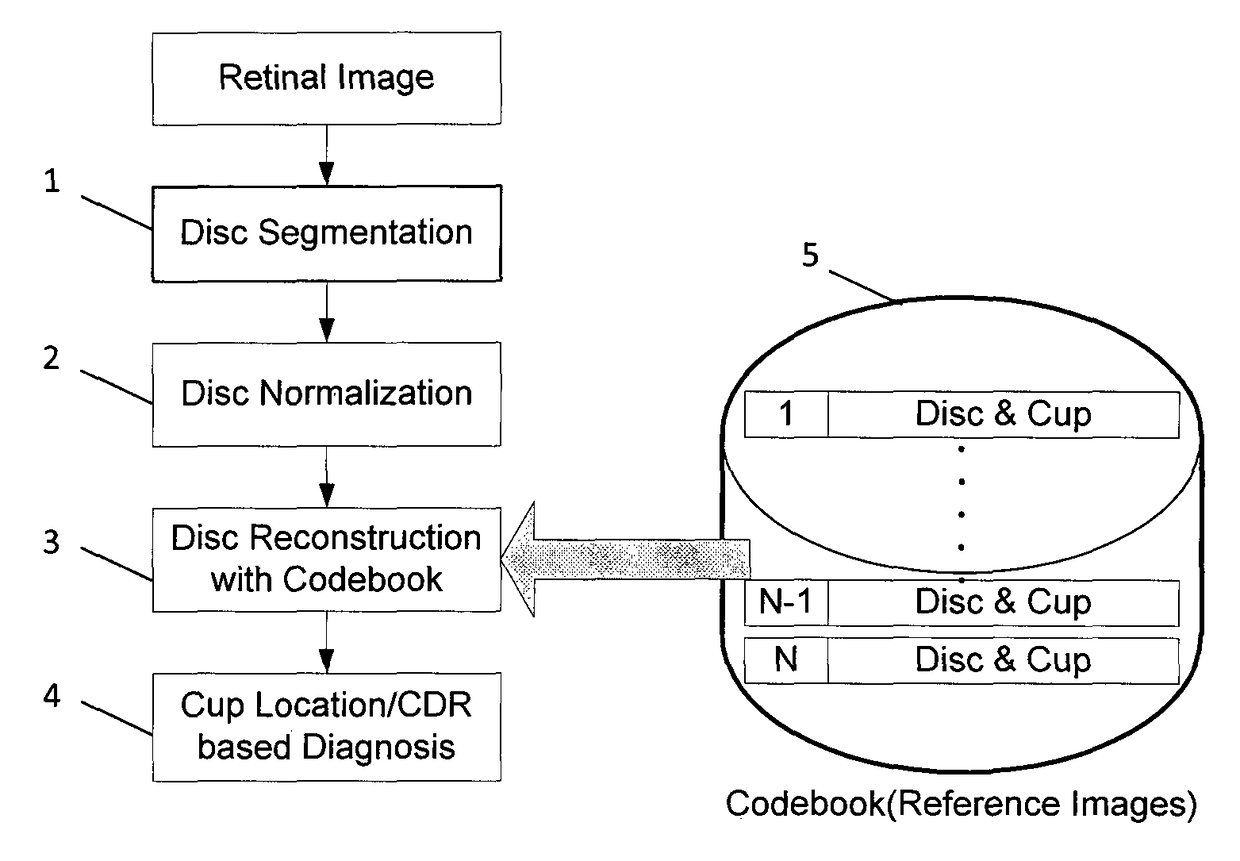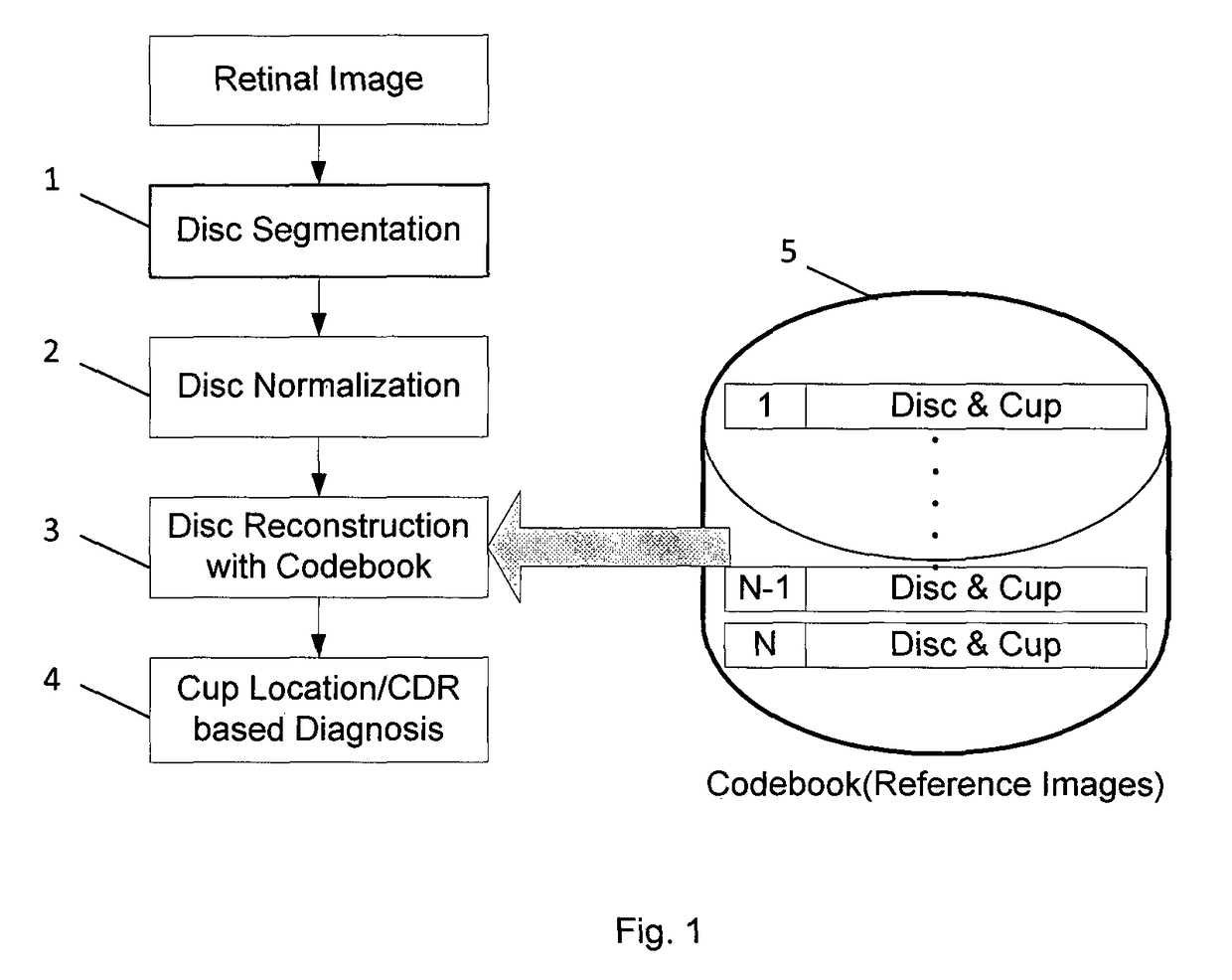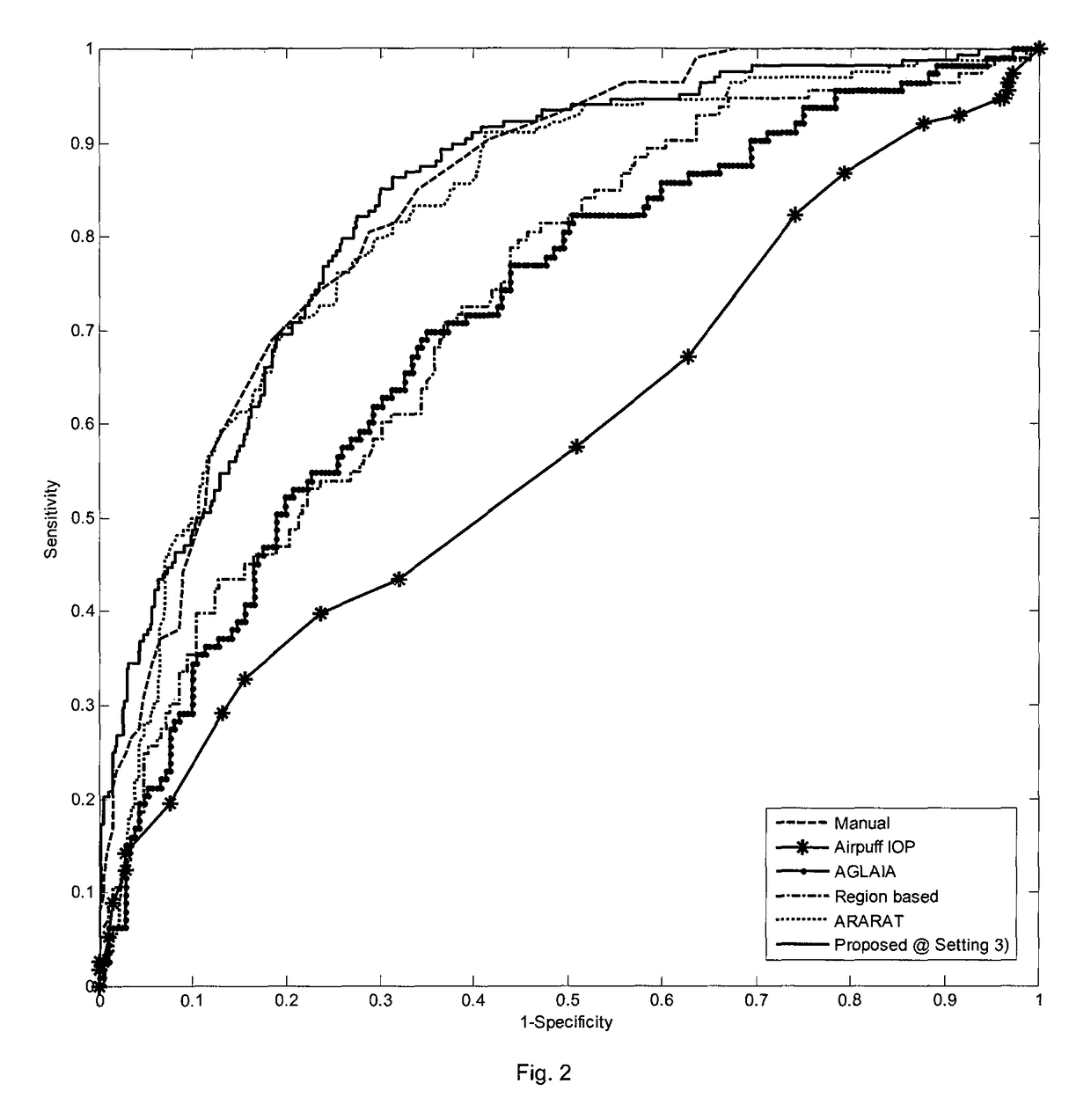Cost-sensitive linear reconstruction based optic cup localization
a localization and optic cup technology, applied in the field of cost-sensitive linear reconstruction based optic cup localization, can solve the problems of inability to recover glaucoma vision loss, ineffective glaucoma screening in the whole population, loss of peripheral vision, etc., and achieve the effect of effective and efficien
- Summary
- Abstract
- Description
- Claims
- Application Information
AI Technical Summary
Benefits of technology
Problems solved by technology
Method used
Image
Examples
Embodiment Construction
[0048]Referring to FIG. 1, the steps are shown of an embodiment of the invention, which performs Optic Cup Localization. As described in detail below the method employs cost-sensitive Linear Reconstruction.
[0049]The starting point of the embodiment is a single, non-stereo retinal image of an eye (typically a fundus image), referred to as the test image. In step 1, the optic disc of this eye is segmented within the test image using existing methods, for example Active Shape Model and template matching. Active shape matching is described at Yin, F., Liu, J., Ong, S. H., Sun, D., Wong, D. W. K., Tan, N. M., Baskaran, M., Cheung, C. Y., Aung, T., Wong, T. Y., Model-based Optic Nerve Head Segmentation on Retinal Fundus Images. In: IEEE Int. Conf. Engin. in Med. and Biol. Soc., pp. 2626-2629 (2011) . Template matching is described at, J., Liu, J., Wong, D. W. K., Yin, F., Cheung, C. Y., Baskaran, M., Aung, T., Wong, T. Y.: Automatic Optic Disc Segmentation with Peripapillary Atrophy Elimi...
PUM
 Login to View More
Login to View More Abstract
Description
Claims
Application Information
 Login to View More
Login to View More - R&D
- Intellectual Property
- Life Sciences
- Materials
- Tech Scout
- Unparalleled Data Quality
- Higher Quality Content
- 60% Fewer Hallucinations
Browse by: Latest US Patents, China's latest patents, Technical Efficacy Thesaurus, Application Domain, Technology Topic, Popular Technical Reports.
© 2025 PatSnap. All rights reserved.Legal|Privacy policy|Modern Slavery Act Transparency Statement|Sitemap|About US| Contact US: help@patsnap.com



